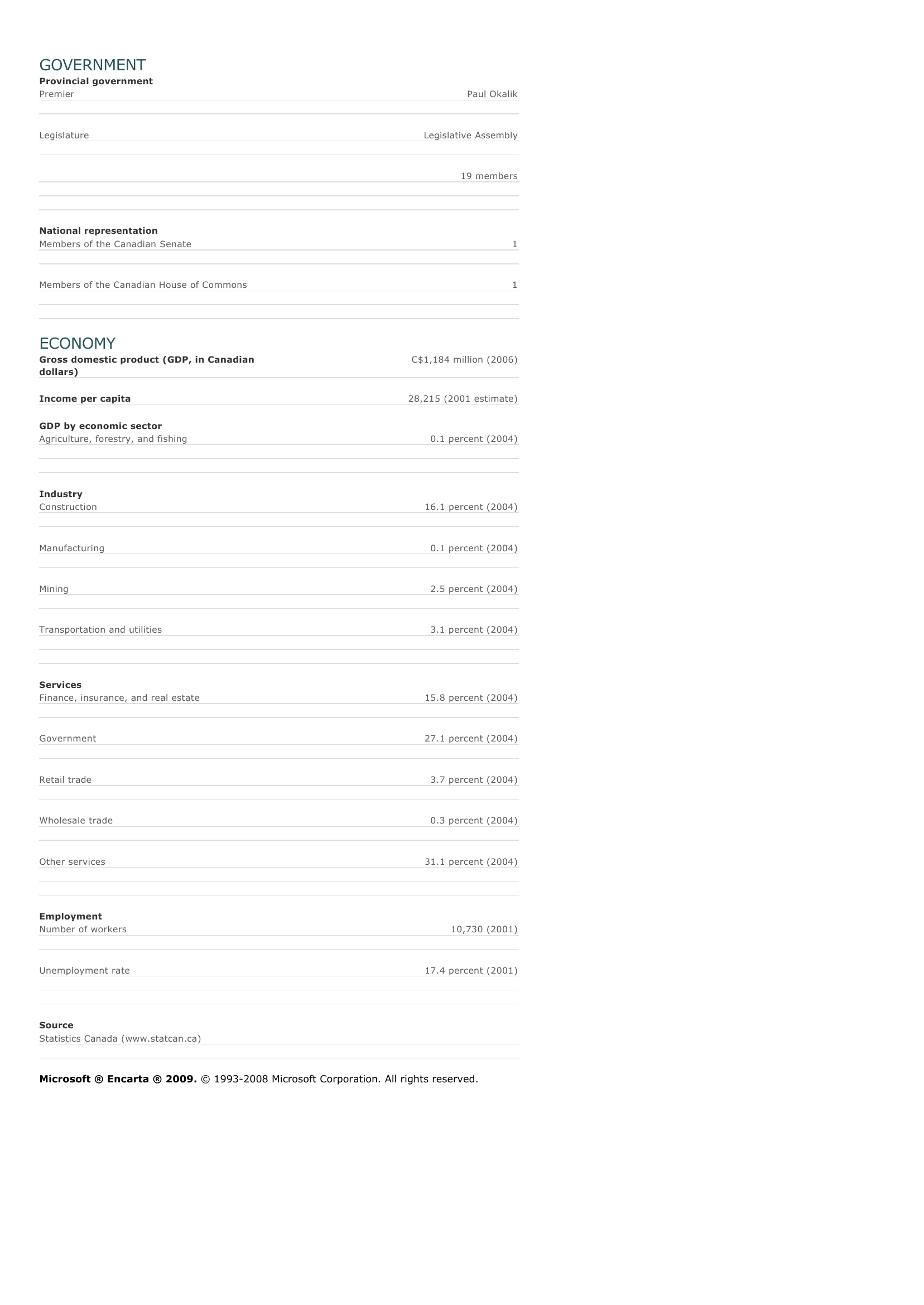Nunavut Territory - Facts and Figures.
Publié le 10/05/2013

Extrait du document
«
GOVERNMENTProvincial governmentPremier Paul Okalik Legislature Legislative Assembly 19 members National representationMembers of the Canadian Senate 1 Members of the Canadian House of Commons 1 ECONOMYGross domestic product (GDP, in Canadiandollars) C$1,184 million (2006)
Income per capita 28,215 (2001 estimate) GDP by economic sectorAgriculture, forestry, and fishing 0.1 percent (2004) IndustryConstruction 16.1 percent (2004) Manufacturing 0.1 percent (2004) Mining 2.5 percent (2004) Transportation and utilities 3.1 percent (2004) ServicesFinance, insurance, and real estate 15.8 percent (2004) Government 27.1 percent (2004) Retail trade 3.7 percent (2004) Wholesale trade 0.3 percent (2004) Other services 31.1 percent (2004) EmploymentNumber of workers 10,730 (2001) Unemployment rate 17.4 percent (2001) SourceStatistics Canada (www.statcan.ca) Microsoft ® Encarta ® 2009. © 1993-2008 Microsoft Corporation.
All rights reserved..
»
↓↓↓ APERÇU DU DOCUMENT ↓↓↓
Liens utiles
- Yukon Territory - Facts and Figures.
- Wyoming - Facts and Figures.
- Wisconsin - Facts and Figures.
- Washington - Facts and Figures.
- West Virginia - Facts and Figures.











